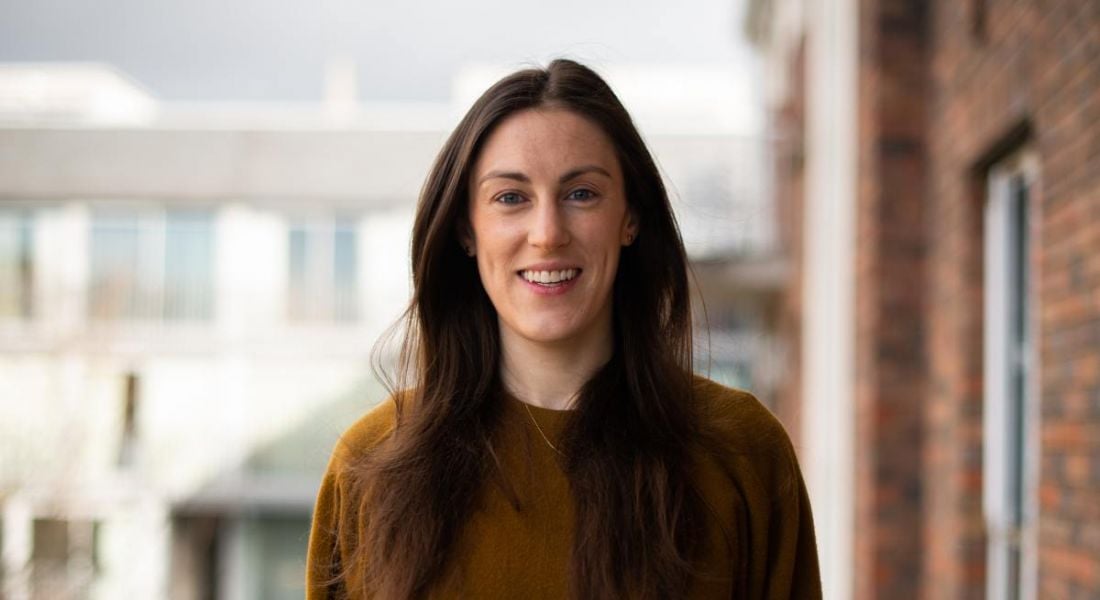Accenture’s Elaine O’Dwyer tells us what she enjoys about working at the crossroads between data and life sciences.
Elaine O’Dwyer is a data science manager for Accenture’s applied intelligence practice, where she focuses specifically on life sciences. Working on data and analytics projects for local and global life sciences clients has allowed her to watch the landscape mature across the sector over the last few years.
Here, she tells us why she thrives on the variety of projects that come with her role.
‘I love the endless variety in my work and the opportunities to move from project to project’
– ELAINE O’DWYER
If there is such a thing, can you describe a typical day in your job?
A typical day for me involves lots of interaction – with who and about what are the parts that vary! I always meet with my project team to discuss the main goals for the day and ensure everybody has what they need to progress.
A follow-on from this may involve working with team members and developing our approach to addressing the project challenge. For example, identifying appropriate data-modelling techniques or the most effective way of visualising insights.
A day seldom goes by without client meetings that vary between interactive information-gathering sessions, discussions on in-flight work and brainstorming on the potential impact areas for data and analytics.
What types of project do you work on?
Projects generally focus on applying advanced analytics across the life sciences industry, often coupled with data and analytics strategy design. Most work done by our Ireland-based team relates to the manufacturing and supply of commercial pharmaceutical products, for example, scheduling optimisation to drive greater productivity and efficiency in the quality control lab.
We build predictive analytics models to improve asset maintenance programmes, use simulation techniques to forecast supply, and apply multivariate analysis to optimise manufacturing processes.
One of my favourite projects has been the application of natural language processing and machine learning to better understand deviations and predict the likelihood of batch issues.
What skills do you use on a daily basis?
Our projects regularly involve client stakeholders across data, IT and the business and therefore combine different areas of expertise and priorities. I use a combination of technical and business expertise, along with communication skills, to make sure we are solving the right problem in the most effective way for everybody.
When possible, I still like to dip into the technical side of things, digging into datasets and keeping abreast with the latest data science and cloud technologies.
What is the hardest part of your working day?
Like so many people, I’ve been working from home for more than a year now. I miss meeting others in person and find the long hours in front of the screen a challenge. The hardest part of this tends to be quickly refocusing on a completely different topic when going from call to call without anything else changing around me.
Do you have any productivity tips that help you through the working day?
I always find that some time outdoors works wonders for my productivity. A short walk in the morning sets me up great for the day, but I won’t pretend that always happens; usually, it’s over lunch when I get out.
At Accenture, we’ve moved to 25 and 50-minute meeting slots, with a real emphasis on keeping to time. This has definitely helped make meetings more productive, which in turn has a positive effect on the rest of your day. The five to 10-minute breather is also great, whether to stretch your legs or get your head ready for whatever is next in your day.
When you first started this job, what were you most surprised to learn was important in the role?
Having a pair of steel-toe shoes! For one of my first life sciences projects, our team worked from an area of the client’s manufacturing site that required everybody to wear protective footwear.
How has your role changed as the data and life sciences sectors have grown and evolved?
I have seen the landscape of data and analytics maturing across the sector over the last few years. My role initially involved a lot of proof-of-concept work with a very specific focus, often the initial experience of data analytics for a client team. Now we are working on large-scale analytics projects, often across multiples sites and combining data from several systems.
In our practice we are maturing too, in particular in our approach to combining data from a multitude of systems to drive value and insights at a whole new level. This is exemplified in our digital laboratory in Leopardstown where we brew beer to mirror fermentation processes common to the biopharma industry.
Utilising data from the latest LIMS, MES and other systems, we have 360-degree, real-time visibility of a batch and the ability to control yield and quality through the generation of recommended actions.
In an industry where companies are striving for a digital plant and the capability to be fully data driven, this test-and-learn environment allows us to bring the latest thinking to our clients in a very real way.
What do you enjoy most about your job?
I work with a fantastic team of data practitioners, learning from them every day. It excites me to see how this team grows and expands, with a number of roles currently open.
I love the endless variety in my work and the opportunities to move from project to project, being exposed to different clients, different areas of the pharma supply chain and taking learnings from one experience to the next.




